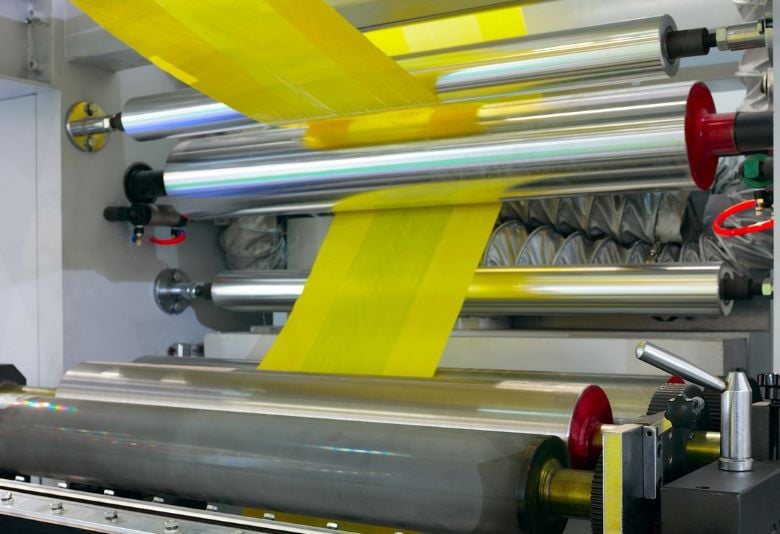The printing industry has long been associated with environmental concerns due to the usage of chemicals, waste production, and energy consumption. However, sustainability in flexographic printing is transforming this narrative. As businesses and consumers become more environmentally conscious, there is a growing demand for more sustainable practices within the printing industry. Flexographic printing, known for its versatility and efficiency, is at the forefront of this green transformation.
In this article, we will explore how sustainability in flexographic printing is being achieved, the benefits it offers, and the innovations that promise a greener future.

What is Flexographic Printing?
Flexographic printing is a popular technique used for printing on a variety of substrates, including paper, plastic, and metal. It utilizes flexible relief plates and quick-drying inks, making it ideal for high-volume runs. For a detailed understanding of flexographic printing, you can visit this external resource.
The Importance of Sustainability in Flexographic Printing
As the global focus shifts towards reducing environmental impact, the need for sustainable printing practices becomes crucial. Flexographic printing, with its adaptability, offers numerous opportunities for sustainable improvements. The key areas include the use of eco-friendly inks, waste reduction, and energy efficiency.
Eco-Friendly Inks
Traditional printing inks often contain volatile organic compounds (VOCs) that can harm the environment. However, in flexographic printing, water-based and UV-curable inks are becoming more prevalent. These inks reduce VOC emissions, making them a more environmentally friendly choice.
Waste Reduction Strategies
Waste management is another critical aspect of sustainability in flexographic printing. Implementing recycling programs and optimizing the use of materials can significantly reduce waste. For example, using digital plate-making technologies can minimize the need for physical plates, thus reducing waste.
Innovations in Flexographic Printing
Technological advancements are paving the way for more sustainable flexographic printing. Innovations such as digital printing technologies and automated systems are enhancing efficiency and reducing waste. Learn more about plate-making techniques that contribute to sustainability.
Energy Efficiency
Energy consumption is a significant concern in the printing industry. By upgrading to energy-efficient machinery and implementing energy management systems, flexographic printing can reduce its carbon footprint. For instance, optimizing printing speeds can lead to energy savings, as discussed in this article.
The Role of Recycled Materials
Utilizing recycled materials is a practical approach to enhance sustainability. Flexographic printing can incorporate recycled substrates, reducing the need for virgin materials and conserving resources.
Challenges and Solutions
Despite the strides towards sustainability, challenges remain. Issues such as cost implications and technological adaptation can hinder progress. However, collaboration across the supply chain and investments in R&D can drive solutions.
Future Prospects of Sustainability in Flexographic Printing
The future of sustainability in flexographic printing looks promising with the continual development of eco-friendly technologies and practices. As consumer demand for sustainable products grows, the industry is likely to see more innovations that align with environmental goals.
Industry Collaboration
Collaboration among industry stakeholders is essential to advance sustainability. By sharing best practices and developing industry standards, the flexographic printing sector can achieve greater environmental impact.
Conclusion
The journey towards sustainability in flexographic printing is ongoing, with numerous opportunities and challenges. By adopting greener practices, utilizing innovative technologies, and fostering industry collaboration, flexographic printing can significantly reduce its environmental footprint, contributing to a more sustainable future.

FAQ Section
What are the benefits of using eco-friendly inks in flexographic printing?
Eco-friendly inks reduce VOC emissions, improve air quality, and are often less harmful to the environment and human health. They also meet the increasing demands for sustainable products.
How can flexographic printing reduce waste?
By implementing recycling programs, optimizing material usage, and adopting digital technologies, flexographic printing can significantly reduce waste.
What is the role of energy efficiency in sustainable flexographic printing?
Energy efficiency is crucial for reducing the carbon footprint of flexographic printing. By using energy-efficient machines and optimizing processes, the industry can save energy and reduce emissions.
For more insights into flexographic printing and sustainability, visit this resource.






